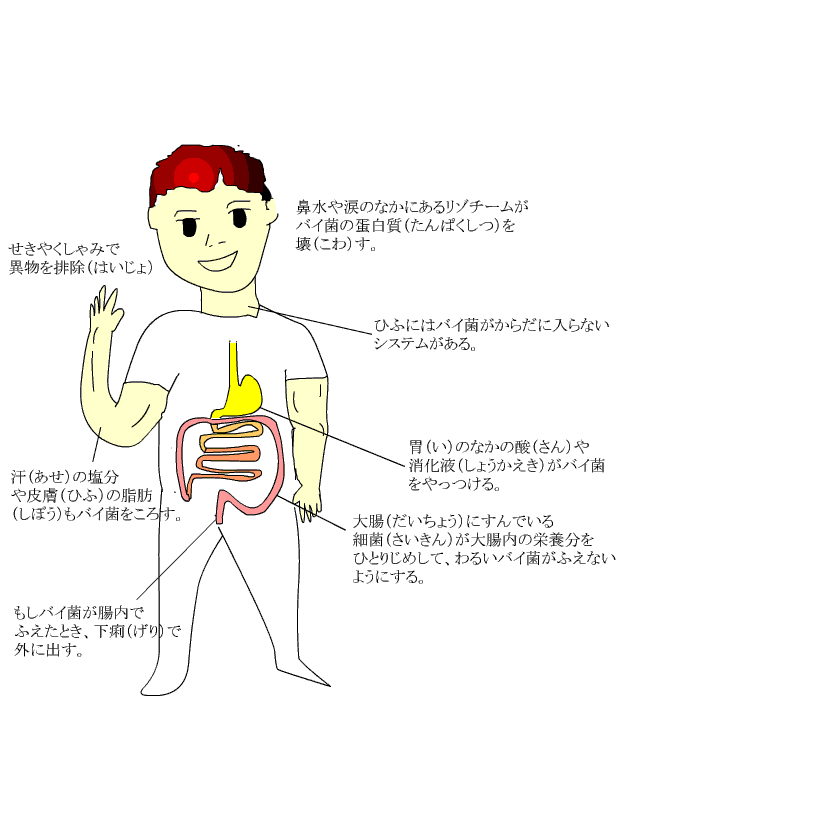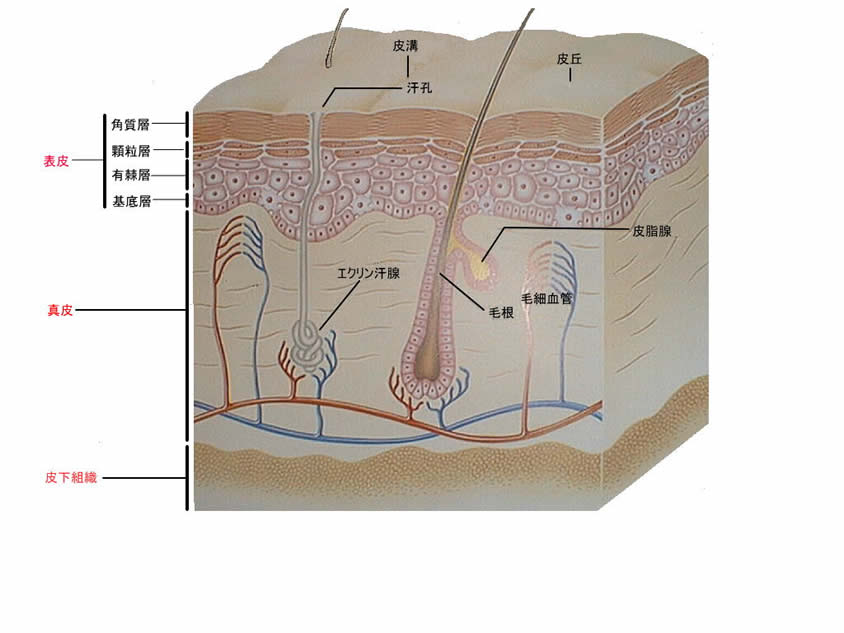| In order not to become sick, it is required to drive out of the bacillus (microbe) or foreign substances invading from the outside from the body, and fight with them and not to be beaten. | ||||||||||||
|
||||||||||||
| Natural immunity | ||||||||||||
| It attacks similarly to any foreign enemies (antigen). Or we would say that runny nose, tears and the skin are considered natural immunity. Since a bacillus will go into the body if there is no skin, and neither runny nose nor tears come out, these are also excellent immunities. And when the unknown enemy invades the inside of the body, inflammation happens, a fever comes out, or the place which the bacillus invaded becomes swollen, and pus oozes out. |
||||||||||||
 |
||||||||||||
Then, what kind of thing is engaged in this natural immunity? |
||||||||||||
What is lysozyme? |
||||||||||||
It is the enzyme which hydrolyzes the polysaccharide which constitutes the cell wall of an eubacteria. Since this operation looks as if it melted bacteria, it is also called a lytic enzyme. In the case of humans, it is contained in tears, nasal discharge, breast milk and so on. |
||||||||||||
| It is difficult, isn’t it? That is, the lysozyme can break the outside wall of a bacillus. Here, let's simply check about bacteria. |
||||||||||||
Bacteria |
||||||||||||
Bacteria are roughly divided into two kinds by Gram stain. Bacteria which dye purple by dyeing are called gram-positive, and ones which do not dye purple but look red are called gram-negative. It seems that gram-positive bacteria are almost harmless for a human being. |
||||||||||||
|
||||||||||||
| Lysozyme acts on only a gram- positive bacterium. A strong pathogenic gram- negative bacterium cannot be sterilized. |
||||||||||||
Since the many of bacteria which enter from a mouth are gram-positive, they are sterilized by a lysozyme and they seldom increase in a mouth. |
||||||||||||
| Skin | ||||||||||||
| It is the film which protects the body physically, and prevents the dryness, or has work of feeling and others. | ||||||||||||
| In the adult, it has the area of about 1.6 square m and about 14-16% of weight of the body weight. It is about 3 kg only under the weight of the skin, and it is about 9 kg if hypodermic adipose tissues are added. | ||||||||||||
| The thickness of the skin changes considerably with places. Most is around 2 mm in thickness, and is about 0.5-3.5 mm. Generally, it is thick in the dorsal and extensor aspects of the body, and it is thin in the ventral and flexor aspects. It is thin in old persons and children in whole. | ||||||||||||
| The skin is divided into three layers, epidermis, dermis, and subcutaneous tissue. | ||||||||||||
皮溝:sulci cutis 、汗孔:sweat pore、皮丘:cristae cutis、表皮:epiderm、角質層:stratum corneum、顆粒層:stratum granulosum 、有棘層:prickle-cell layer、基底層:stratum cylindricum、真皮:dermis、皮脂腺:sebaceous gland 、エクリン汗腺:eccrine gland 、毛細血管:capillary vessel 、毛根:hair root |
||||||||||||
|
When bacteria and the foreign substance which were not able to be driven out outside of the body go into the inside of the body |
||||||||||||
Appearance of a white blood cell |
||||||||||||
|
||||||||||||
|
||||||||||||
Natural Killer (NK) cells in neutrophils, monocytes and lymphocytes process bacteria or foreign substances indiscriminately and quickly in about 4 hours. |
||||||||||||
|
||||||||||||
An eosinophil has a phagocytic bactericidal activity although it is weak. It is drawn by the eosinophil chemotactic factor emitted from a mast cell on the occasion of an allergic reaction. |
||||||||||||
| There are the motion capability and phagocytic capability in a basophil as well, but it is weak. There is an IgE receptor on the surface cells, and If allergen adheres, degranulation will be carried out, and histamine, an eosinophil chemotactic factor and so on are emitted, and a leukotriene is produced, and an allergic reaction is caused. |
||||||||||||
 It is difficult. But Lets` do your best It is difficult. But Lets` do your best |
||||||||||||
T lymphocytes and B lymphocytes are the cells engaged in the acquired immunity. |
||||||||||||
|
||||||||||||







